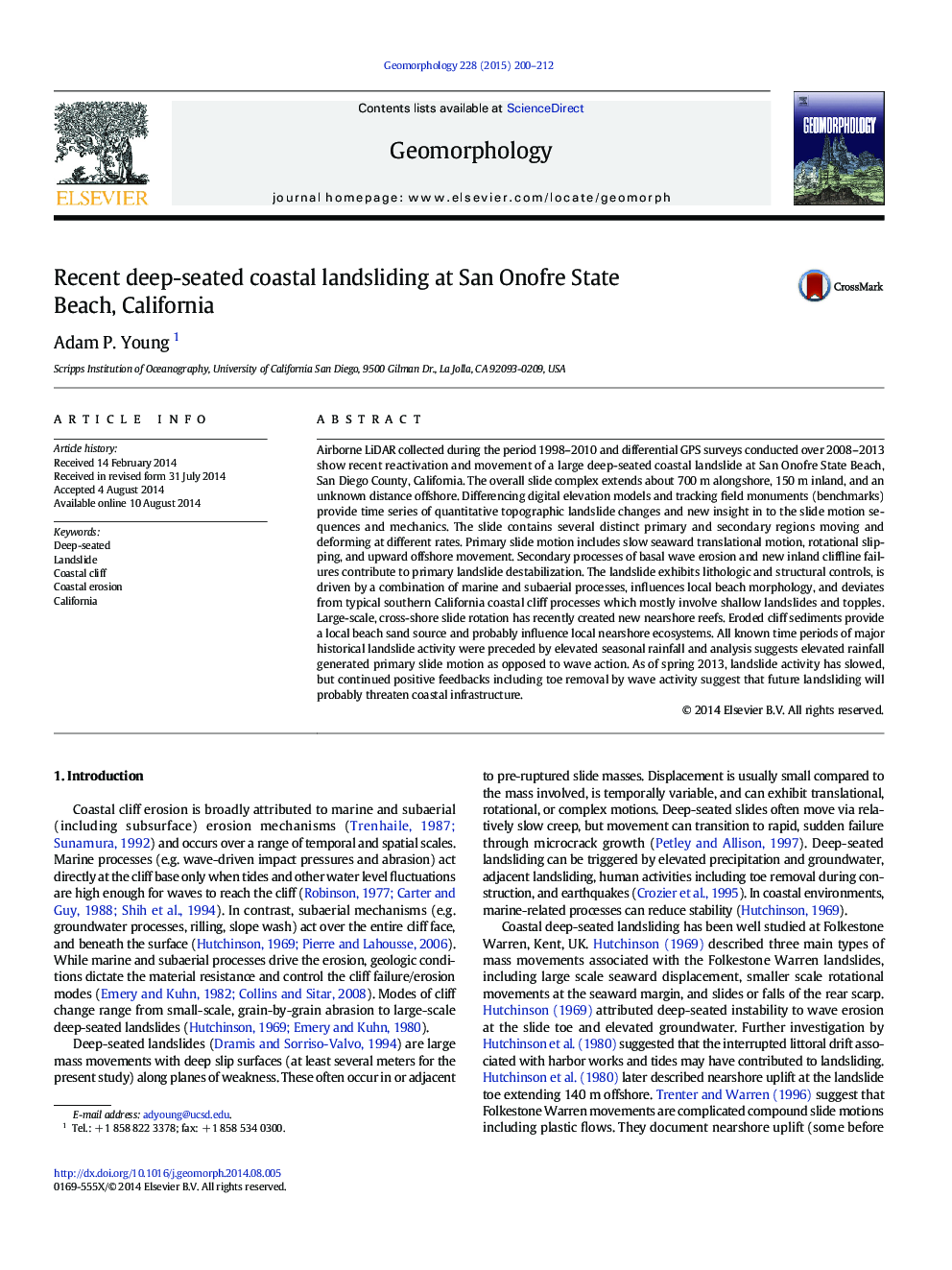| کد مقاله | کد نشریه | سال انتشار | مقاله انگلیسی | نسخه تمام متن |
|---|---|---|---|---|
| 6432255 | 1635421 | 2015 | 13 صفحه PDF | دانلود رایگان |
- LiDAR and DGPS time series show topographic changes of a large coastal landslide.
- Slide motion is complex and contains distinct regions deforming differently.
- Primary slide motion is deep-seated rotation and translation.
- Major landslide events were preceded by elevated rainfall and groundwater.
- Wave erosion and cliffline failures contribute to primary slide destabilization.
Airborne LiDAR collected during the period 1998-2010 and differential GPS surveys conducted over 2008-2013 show recent reactivation and movement of a large deep-seated coastal landslide at San Onofre State Beach, San Diego County, California. The overall slide complex extends about 700Â m alongshore, 150Â m inland, and an unknown distance offshore. Differencing digital elevation models and tracking field monuments (benchmarks) provide time series of quantitative topographic landslide changes and new insight in to the slide motion sequences and mechanics. The slide contains several distinct primary and secondary regions moving and deforming at different rates. Primary slide motion includes slow seaward translational motion, rotational slipping, and upward offshore movement. Secondary processes of basal wave erosion and new inland cliffline failures contribute to primary landslide destabilization. The landslide exhibits lithologic and structural controls, is driven by a combination of marine and subaerial processes, influences local beach morphology, and deviates from typical southern California coastal cliff processes which mostly involve shallow landslides and topples. Large-scale, cross-shore slide rotation has recently created new nearshore reefs. Eroded cliff sediments provide a local beach sand source and probably influence local nearshore ecosystems. All known time periods of major historical landslide activity were preceded by elevated seasonal rainfall and analysis suggests elevated rainfall generated primary slide motion as opposed to wave action. As of spring 2013, landslide activity has slowed, but continued positive feedbacks including toe removal by wave activity suggest that future landsliding will probably threaten coastal infrastructure.
Journal: Geomorphology - Volume 228, 1 January 2015, Pages 200-212
